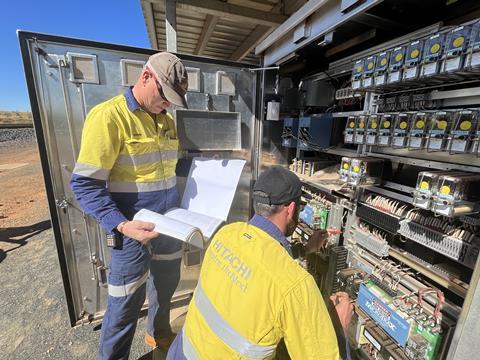
AUSTRALIA: Hitachi Rail is to begin work shortly on the third and final phase of upgrading interlockings on Rio Tinto’s autonomous heavy haul rail network in the Pilbara region of Western Australia.
In 2018 Rio Tinto launched automated operation under its AutoHaul programme, with Hitachi technology enabling a fleet of 221 locomotives to haul 2·4 km long driverless iron ore trains autonomously under Grade of Automation 4. They are supervised from a remote operations centre in Perth. The average return journey is 800 km, taking approximately 40 h including loading and dumping.
A three-year project to replace the Integrated Control & Supervision System on the 1 900 km network is also underway.
This will replace the existing ICSS MicroTrax interlocking system with a Hitachi Rail-designed MicroLok II interlocking, intended to optimise throughput, punctuality and life-cycle costs while minimising faults.
Functions include train detection, track circuit integrity, coded track circuit communication, cab signalling code generation and event recording. It also includes a vital interlocking code and a code system for non-vital control and indications.

The ICSS Phase 1 and Phase 2 projects have been completed, with the previous interlocking system replaced and lineside equipment upgraded across 100 km of the Tom Price line and 200 km of the Yandi line.
The imminent start of Phase 3 was announced on November 8, and will focus on the Paraburdoo line. It is expected to go live in 2025.

















